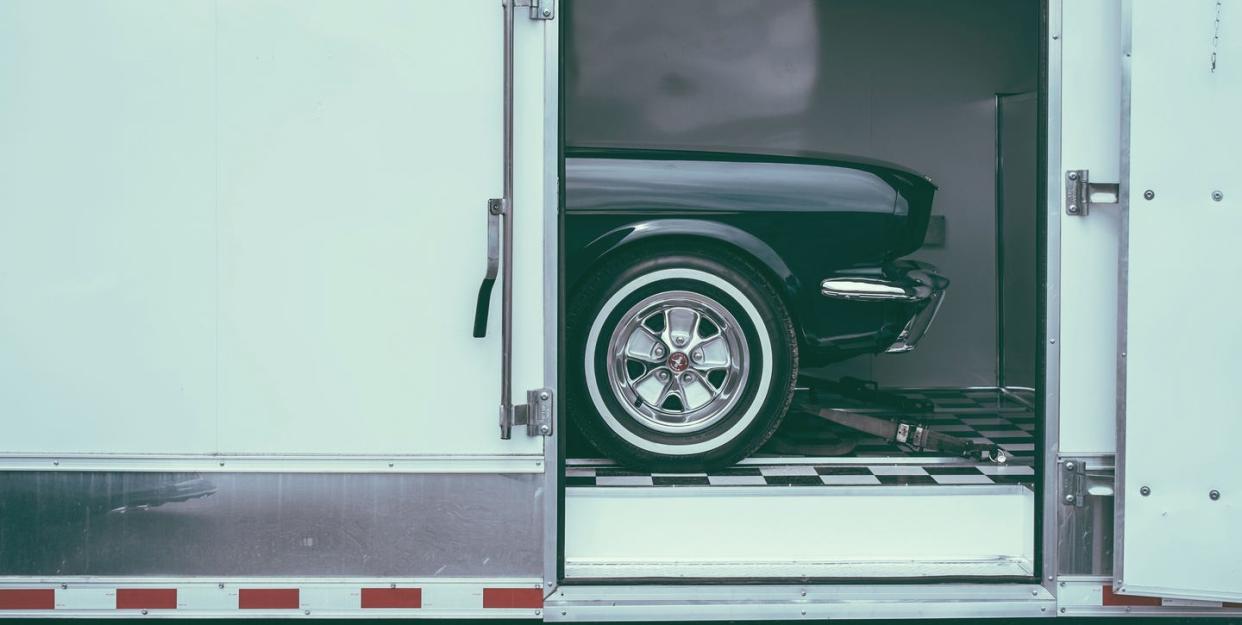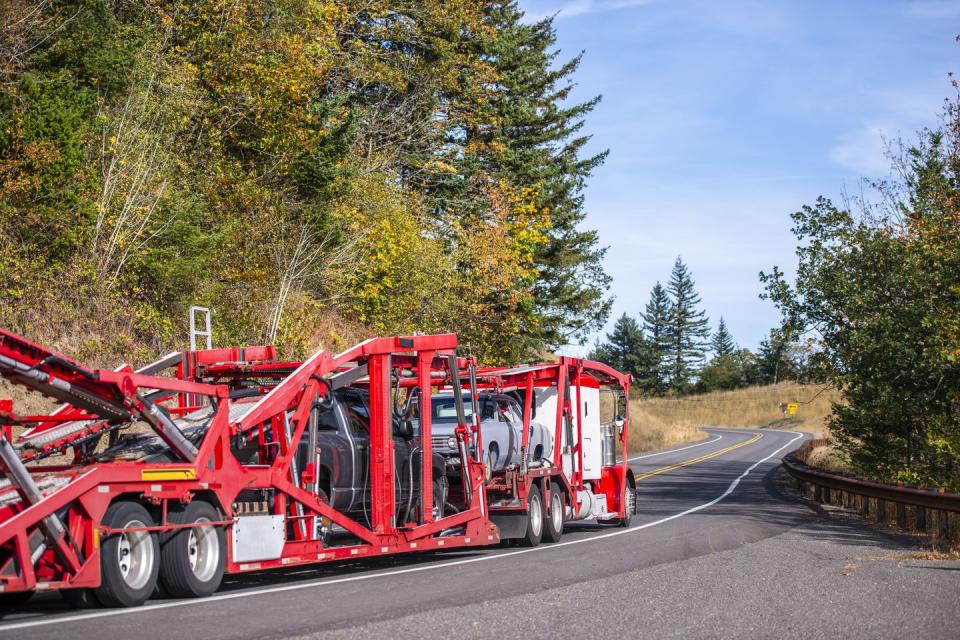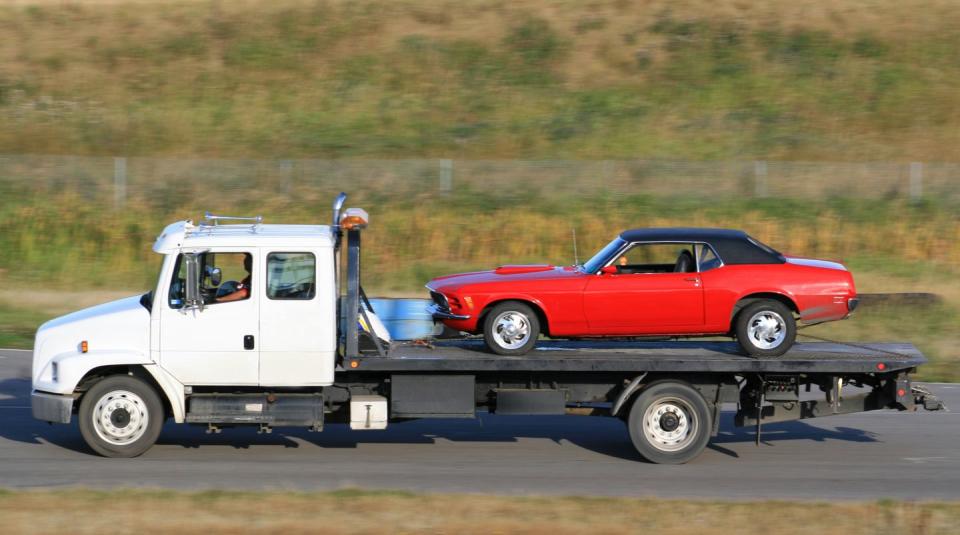What Does It Cost to Ship a Car?

There are plenty of reasons you might need to ship a car, crossover, or truck across the country. It could be for a new job. It might be to give your kid some wheels at college on the opposite coast. Maybe you're moving to a new state. It's possible that a relative could use your old, reliable pickup truck now that you've got a new one. Or maybe you just found your dream classic car or hot rod while surfing the internet and want to get that special vehicle home from a faraway location.
Where can you find companies that do vehicle shipping safely and reliably, what problems should you avoid, and-just as important-how much does it cost to ship a car? We at Car and Driver get a lot of cars shipped to us by manufacturers, but if we need to move a long-term test car cross-country, we almost always drive it there. On rare occasions, though, we need to get a special vehicle that we've purchased for personal use shipped to us. That's when we do our own shopping research to find out how much it costs to ship a car. From our research, some useful tips have emerged concerning the precautions you should take before you ship a vehicle, and what to do if things go awry despite your best efforts.
The Basics of Shipping a Vehicle
If you're new to shipping vehicles, your first stop should be the Federal Motor Carrier Safety Administration (FMCSA) website's Protect Your Move section. It will explain the critical difference between a broker and a transporter. Brokers and transporters that operate interstate must be registered with the FMCSA. And if there is a payment or damage problem, the FMCSA's Commercial Enforcement and Investigations Division is the appropriate federal agency for complaints. (The complaint hotline is at 888–368–7238.)
Shopping for Shipping

As you hit the internet to get estimates (get at least three), look for a six-digit (broker) or seven-digit (transporter) motor carrier docket number on the company's site. These numbers can be checked for validity and complaints by doing a carrier search on the FMCSA site. Avoid any firm not displaying that number prominently. Such folks could be serious crooks or simply hiding a sad, long history of user complaints.
Begin your search well ahead of the time you need to ship your vehicle, and schedule your transport two to three weeks in advance of when you want it picked up. Some companies claim they can get it done with shorter notice, but most sites ask for some lead time to provide a best price. Schedule later and you pay more.
On the better shipping-company websites, you'll find a cost-estimate calculator. That'll get you started. But you eventually want to talk directly to a company rep and get a written estimate. It should include all charges, should have no incomplete or blank spaces, and should be signed. Is there a delay policy that provides a refund or discount if the vehicle arrives outside a delivery window? Is shipper insurance available? Does the shipper have 24/7 online vehicle tracking available to you? Any charges at the delivery point should really be no more than 10 percent above the estimate. (If the charges are above that, contact the Surface Transportation Board.) And if you pay with a credit or debit card, make sure only the amount you authorized is transferred. Solid companies don't usually require any up-front payments. Payment is usually due when a carrier is assigned and pickup is scheduled.
Critical Variables of Car Shipping
When plugging in pickup and delivery locations, keep in mind that door-to-door shipping costs more. Large multi-vehicle delivery trucks have trouble maneuvering on narrow, crooked rural lanes. If you can have your vehicle delivered at a location where there's lots of room to maneuver a big rig-for example, a deserted parking lot-it could greatly reduce your cost.
Spring and summer are high-demand periods with higher rates. There are usually deep winter discounts. Some carriers, however, charge a premium for icy or snowy road conditions.
Another big variable is delivery method. Do you want your vehicle shipped safely inside a locked and enclosed trailer? Or can it ride out in the open, exposed to road and weather conditions? Most shippers won't allow covers. They could blow off, block a windshield, and cause an accident. But maybe you could cover your exposed vehicle with a protective film. If those 1961 hubcaps and that hood mascot are expensive and hard to find, maybe they should ride snug in the trunk.

Other critical cost factors are the trip distance and the vehicle type, size, and mass. Farther, bigger, and heavier cost more. Moving a motorcycle from a major city to another major city just one state over (around 500 miles) might cost as little as $300. But shipping a car, truck, or SUV costs a lot more. We checked the price for moving a 2016 Honda Accord from New York City to Costa Mesa, California, and found it ranged from $1200–$1500 at the low end all the way to about $3000. With that range of prices, it's worth your time to fully research the carriers and find customer feedback and ratings on their performance.
If the vehicle has any aftermarket parts or modifications, that should be discussed with the company rep before they prepare the written estimate. Bigger-than-stock wheels, a wider track, a roof rack, or a light bar can significantly complicate vehicle loading and add to the cost.
Car-Shipping Checklist

•Make sure the vehicle is insured by the shipper for its Kelley Blue Book or fair market value.
• Have the documents required by the carrier's driver at pickup (your driver's license, your vehicle's registration, and proof of insurance).
• Wash the car and do a walkaround inspection before the ship date. Take photos of the roof, body panels, fascias, glass, and, if possible, the undercarriage.
• Shut off or disable the alarm, if applicable.
• Have an eighth to a quarter of a tank of fuel, no more. (More adds mass and is a fire hazard.)
• Secure all loose or aftermarket parts, and retract antennas.
• Be at the pickup location well ahead of the agreed-upon time.
• Give the keys to the transport driver.
• Inspect your vehicle with the driver; agree to and sign a bill of lading detailing any current damage.
• Watch the vehicle being loaded into the truck.
• Make sure a knowledgeable expert will receive the vehicle at the delivery location on the other end if you cannot be there yourself.
• You or your knowledgeable representative should watch the vehicle being unloaded from the truck to ensure it is not damaged at that point or notice if it has sustained damage during the trip.
• Do not sign the final bill of lading before completing a full inspection of your vehicle with the carrier's driver present. If there is damage, do not sign the bill of lading and immediately contact the broker or transport company. You might consider withholding any final payment.
• Take photos of any damage at the delivery site.
Keep the above tips in mind and you'll have a much smoother shipping experience. Good luck with your car-shipping adventure!
('You Might Also Like',)

